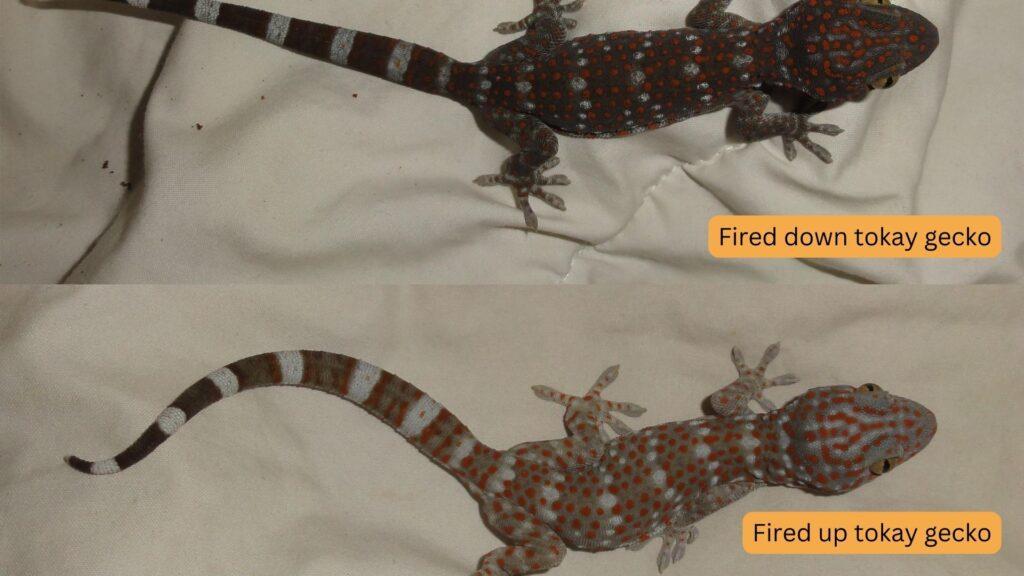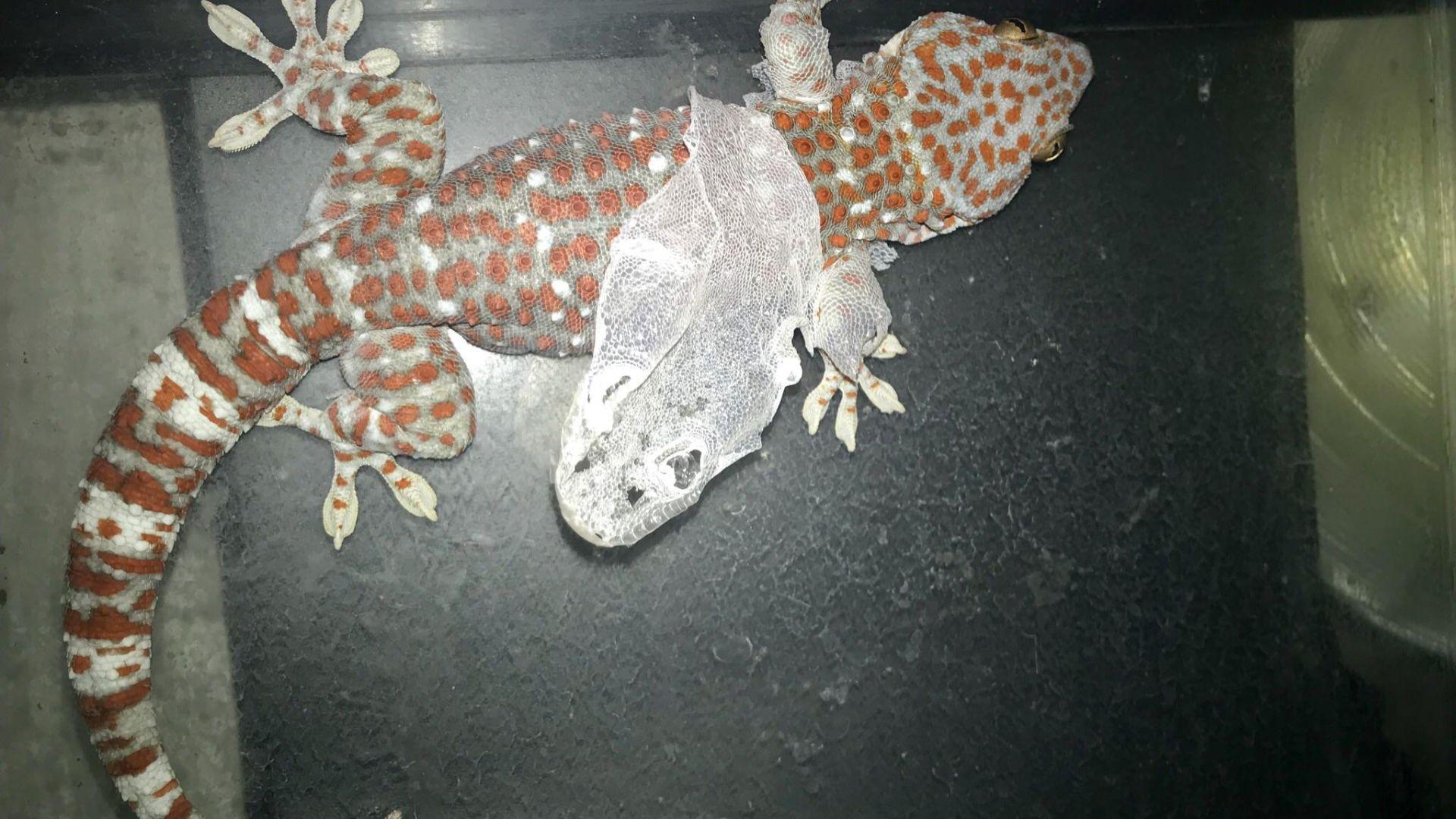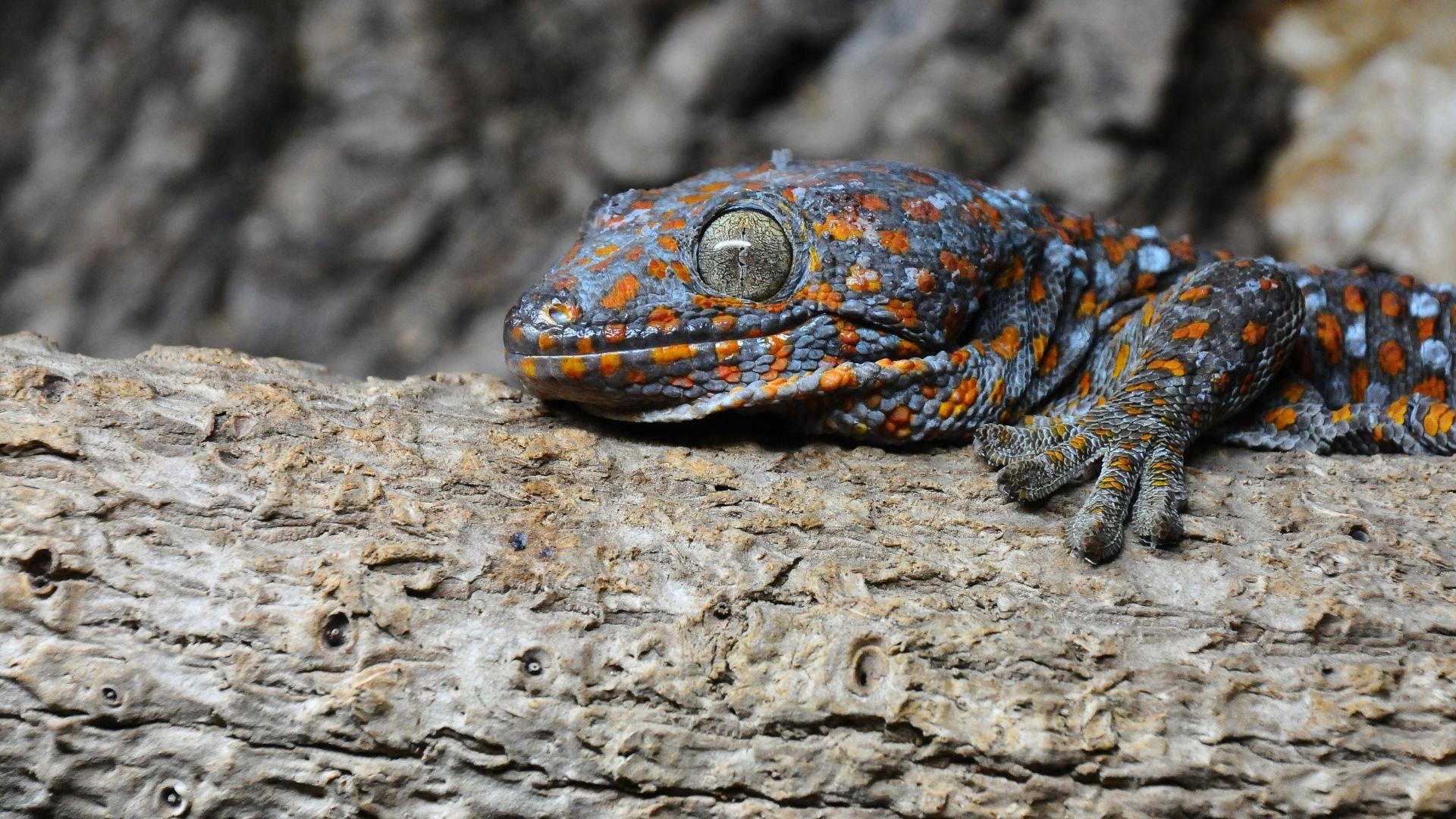
Key Takeaway:
- Geckos, including the Tokay Gecko, have the ability to change their skin color using specialized skin cells called chromatophores, which contain pigments that give the skin its color.
- They can change color to blend in with their surroundings, mimic the coloration of other animals, regulate their body temperature, and indicate their mood or health.
- Tokay Geckos can change color to blue, green, grey, brown, black, and white.
- If a Tokay Gecko’s color changes due to stress, shedding, or a health issue, it’s essential to address the underlying cause.
Geckos are not your ordinary lizards. They possess a rare quality that piqued the curiosity of reptile enthusiasts worldwide – the ability to change color.
Among the color-changing creatures, the Tokay Gecko stands out, known for its striking appearance and mesmerizing color shifts.
In this article, we will embark on an exciting journey to unravel the secrets of the Tokay Gecko’s remarkable color-changing abilities.
We will delve into the fascinating reasons behind this behavior, explore the range of colors these geckos can change into, and decipher what their color changes signify.
We will also share expert insights on what to do if your Tokay Gecko undergoes a sudden color transformation and why it may turn dark or almost white.
Can Tokay Geckos Change Color?
So, the answer to the question “Can Tokay Geckos change color?” is a resounding yes.
Tokay Geckos like other gecko species have specialized skin cells called chromatophores, which contain pigments that give the skin its color.
By expanding or contracting these cells, they can adjust their skin tone and appear to change color.
This ability is not unique to Tokay Geckos, but it is rare among gecko species.
However, it’s worth noting that not all Tokay Geckos have the same color-changing ability.

Some geckos may be more adept at adjusting their skin tone than others, and this can be influenced by factors such as age, sex, and health.
As stated previously, Tokay Geckos can change their skin color to fit their surroundings as a sort of camouflage or to imitate the coloring of other animals as a deterrent to predators.
They can also alter color in reaction to changes in temperature.
A cooler temperature can make a Tokay Gecko appear darker, whilst a higher temperature can cause it to appear brighter and more colorful.
In addition to these qualities, Tokay Geckos have the ability to alter their color to indicate their mood or health.
For instance, if they are stressed or feel threatened, their color may darken. On the other hand, they may appear brighter if they are calm and content.
Reasons Why Tokay Geckos Change Color
One of the main reasons why Tokay Geckos change color is for camouflage.
When a Tokay Gecko is in a new environment, it may take on the coloration of its surroundings to blend in and avoid being detected by predators.
In addition to camouflage, Tokay Geckos can also change color to mimic the coloration of other animals as a form of protection.
Some predators are deterred by the bright, warning coloration of poisonous or venomous animals.
By mimicking the coloration of these dangerous animals, Tokay Geckos may be able to avoid becoming a meal.
Another reason why Tokay Geckos change color is in response to temperature changes.
As stated, before a cooler temperature may cause a Tokay Gecko to appear darker in color, while a warmer temperature can make it appear brighter and more colorful.
How Many Colors Can Tokay Geckos Change To?
Tokay Geckos are capable of changing their color to:
- Blue
- Green
- Grey
- Brown
- Black
- White
It is impossible to estimate the precise amount of colors a Tokay Gecko may change to, as it might vary based on the individual animal and its environment.
Nonetheless, the variety of hues they can produce is undeniably astounding and demonstrates their remarkable adaptability to their environment.

Tokay Gecko Color Changes and Their Meanings
Now let’s explore what different color changes in Tokay Geckos may signify.
As mentioned earlier, Tokay Geckos can change their color for a variety of reasons, including camouflage, mimicry, temperature changes, and mood or health.
If a Tokay Gecko changes its color to match the color of its surroundings, it is likely trying to blend in with its environment to avoid predators.
Conversely, if it changes to mimic the coloration of a poisonous or venomous animal, it is probably trying to deter predators.
A Tokay Gecko feeling stressed or threatened may become darker in color, while one that is relaxed, and content may appear brighter and more vibrant.
If a Tokay Gecko’s color changes in response to temperature changes, it may be trying to regulate its body temperature.
What To Do If Your Tokay Gecko Has Changed Color?

If you have a Tokay Gecko that has changed color, you may be wondering what to do. The appropriate action will depend on the reason for the color change.
If the color change is due to stress, it’s essential to identify and address the source of stress.
Some common sources of stress in Tokay Geckos include inappropriate temperatures, insufficient hiding places, overfeeding, and being handled too much or too roughly.
By addressing the source of stress, you can help your Tokay Gecko return to a more normal coloration.
The color change might also be due to shedding. Tokay geckos become pale in color when about to shed their skin.
If the color change is due to a health issue, it’s crucial to seek veterinary attention.
Some health issues that can cause color changes in Tokay Geckos include infections, parasites, and nutritional deficiencies.
A veterinarian can help diagnose and treat any underlying health issues contributing to the color change.
Why is My Tokay Gecko Dark?
Now let’s explore why your Tokay Gecko may be dark in color. A Tokay Gecko may become dark if it’s stressed, feeling threatened, or dark out (as they are nocturnal).
If you suspect that your Tokay Gecko’s dark color is due to stress or feeling threatened, try to identify the source of stress and address it.
Providing ample hiding places, minimizing handling, and ensuring appropriate temperatures and humidity levels can help reduce stress in Tokay Geckos.
In some cases, a Tokay Gecko may become dark in color due to a health issue, such as an infection or parasite.
If you suspect that your Tokay Gecko’s dark color is due to a health issue, it’s important to seek veterinary attention as soon as possible.
Why Did My Tokay Gecko Turn Almost White?
If your Tokay Gecko has turned almost white, there could be several reasons for this color change.
One reason could be due to shedding. When Tokay Geckos shed, their skin may appear lighter or almost white before the old skin is shed. This is a natural process and nothing to worry about.
Another reason for a Tokay Gecko turning almost white could be stress. Tokay Geckos can turn almost white if they are under significant stress.
In this case, it’s important to identify and address the source of stress to help the Tokay Gecko return to a more normal coloration.
A third reason for a Tokay Gecko turning almost white is due to a lack of pigmentation.

Some geckos are bred to have less pigmentation, resulting in a lighter coloration.
However, suppose a Tokay Gecko’s color changes suddenly and dramatically. In that case, it’s important to investigate further to determine if there is an underlying health issue or environmental factor causing the color change.
Lastly, a Tokay Gecko turning almost white could be a sign of a fungal infection.
Tokay Geckos can be prone to fungal infections, which can cause a white or grayish appearance on the skin.
If you suspect that your Tokay Gecko’s almost white color is due to a fungal infection, it’s essential to seek veterinary attention to diagnose and treat the infection.
Summary
Tokay Geckos have the unique ability to change their skin color in response to various stimuli, such as camouflage, mimicry, temperature changes, and mood or health.
They can also change color to reflect their mood or health, such as if they are feeling stressed or threatened or if they are relaxed and content.
They can change their color to blue, green, grey, brown, black, or white.
The variety of hues they can produce is astounding and demonstrates their remarkable adaptability to their environment.
If a Tokay Gecko’s color changes suddenly and dramatically, it is important to investigate further to determine if there is an underlying health issue or environmental factor causing the color change.
If this is the case, it is essential to seek veterinary attention to diagnose and treat the infection.
Sources:

